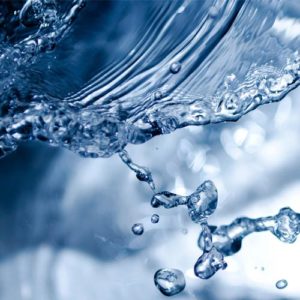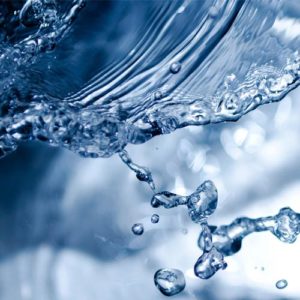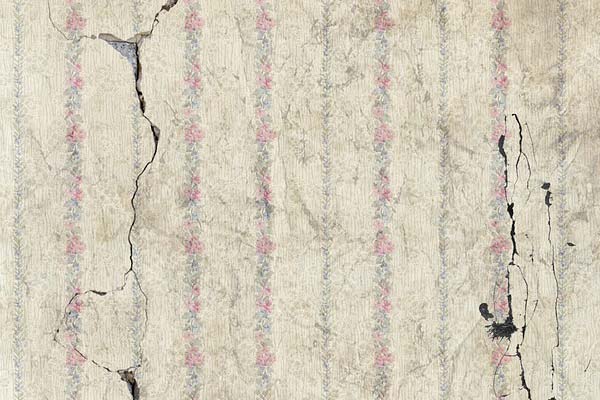Water is not running off your building fast and there is water ponding.
When it comes to the design of a house, many people value aesthetics more than practicality. A good house design should ensure all rain water gets off surfaces of the building as quickly as possible because ponding of water increases the likelihood of water seepage. Take for example a terrace house with a flat roof structure where sloping of the roof surface is not enough for water to completely flow off the surface, there will be puddles of water on the roof after a rain. These puddles of water will eventually evaporate off but this process takes time. The duration for all this water to fully evaporate may take up to days; hence you have water ponding on the roof for the entire duration. Water, like everything else on Earth, is being pulled downwards by gravity and it will always look for weak spots between joints, cracks and other voids to enter. If your house is completely water tight, which is not an easy feat to achieve, this will not affect you but should your house experience any minor cracks or weak joints on the roof, the puddles of water we earlier mentioned will definitely seep into your house.
Your waterproofing systems were not properly installed.
Waterproofing is a highly niche trade and it requires years and years of experience to have a clear understanding of how waterproofing systems work and how best to install them. If you have done some research on waterproofing, you would have realise that there is a huge variety of waterproofing materials, cementitious, acrylic based, polyurethane based, fleece backed, fiberglass and the list goes on and on. The first step to understanding waterproofing is to understand the functions of all the waterproofing materials and where certain materials are suitable to be used and the places they are not suitable to be applied on. A well installed waterproofing system should last decades. What determines if a waterproofing system is properly installed or not?
1. Surface Preparation
The substrate/surface to be waterproofed must be adequately prepared prior to installation of waterproofing. Presence of contaminants such as dust, dirt, soil or grease is highly detrimental to the success of a waterproofing system. All substrates/surfaces must be free of such contaminants and adequately primed with primer that is suitable for the waterproofing membrane to be installed.
2. Application of Waterproofing Membrane
After identifying the suitable waterproofing membrane, apply it onto the primed surface/substrate according to the manufacturer’s specifications. Certain waterproofing membrane can be applied through brush or roller, while certain waterproofing membrane needs to be spray-applied. This would depend on the manufacturer’s specification. Follow the manufacturer’s specification and instructions when applying the waterproofing membrane.
Usually, waterproofing membranes are applied in a zig-zag format. If the first layer of waterproofing membrane is applied horizontally to the floor surface, the second layer of waterproofing should be applied in a crossed way to the first layer. This is to ensure that after the membrane has cured, the strength of the cured membrane is stronger.
Furthermore, all waterproofing systems must have a minimum upturn of 300mm onto adjacent wall surfaces. No waterproofing system is complete without an upturn. Having an upturn ensures that no water will escape/seep out through the wall surfaces. This is especially important in the case of waterproofing systems in toilets. Imagine toilet walls without waterproofing upturn, water will seepage into the toilet walls when you shower or wash the toilet, causing water seepage into adjacent rooms.
Poor design of facades/windows will lead to water seepage.
Designs of facades are usually done by suppliers themselves and such suppliers have little knowledge of waterproofing. As a result, products are often prone to water seepage over time due to wear and tear of sealing and joints. It requires a comprehensive design whereby heavy emphasis is placed onto the practicality of the design, in the sense that we do not compromise water tightness or durability for aesthetical purposes.
There were many cases of water seepage through facades and windows which we encountered due to over emphasis on aesthetics and paying little or no attention to the long term durability of the product which often leads to water seepage. When it comes to building your dream home of course it is important for it to be aesthetically pleasing but it is equally, if not more, important to choose a design which will not pose any problem in the future.
Conclusion
Water seepage is a common problem in our urban built-up area. It is important that we pay attention to the details during construction and strike a balance between aesthetics and practicality. It requires a strong understanding of how waterproofing works and how water intrusion occurs to come out with a solid waterproofing system. When water intrusion, seepage or leakage occurs, it is important to engage a waterproofing specialist to rectify the issues instead of a general contractor.





